The Pyjama Girl Case Blu-ray Movie
HomeThe Pyjama Girl Case Blu-ray Movie 
La ragazza dal pigiama giallo / The Pajama Girl CaseArrow | 1977 | 102 min | Not rated | Sep 18, 2018
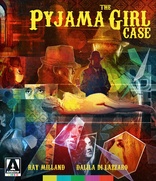
Movie rating
6.4 | / 10 |
Blu-ray rating
| Users | 0.0 | |
| Reviewer | 4.0 | |
| Overall | 4.0 |
Overview
The Pyjama Girl Case (1977)
Based on the infamous real-life murder case that shocked the world! When the mutilated corpse of a young woman is found on an Australian beach, retired detective Thompson involves himself in the investigation. But before they can find the killer, the police must first identify the victim. Who was this once-beautiful girl found clad only in yellow pajamas? Why would the authorities put her nude body on public display? What sexual depravity did she endure before her murder? And even if Thompson can crack the baffling case, will he survive to see her killer brought to justice?
Starring: Ray Milland, Dalila Di Lazzaro, Michele Placido, Mel Ferrer, Howard RossDirector: Flavio Mogherini
| Foreign | Uncertain |
| Mystery | Uncertain |
| Thriller | Uncertain |
| Crime | Uncertain |
Specifications
Video
Video codec: MPEG-4 AVC
Video resolution: 1080p
Aspect ratio: 1.85:1
Original aspect ratio: 1.85:1
Audio
English: DTS-HD Master Audio Mono (48kHz, 24-bit)
Italian: DTS-HD Master Audio Mono
BDInfo verified. Italian track is also (48kHz, 24-bit)
Subtitles
English
Discs
Blu-ray Disc
Single disc (1 BD)
Playback
Region A, B (locked)
Review
Rating summary
| Movie | 3.5 | |
| Video | 4.5 | |
| Audio | 4.0 | |
| Extras | 3.5 | |
| Overall | 4.0 |
The Pyjama Girl Case Blu-ray Movie Review
Reviewed by Jeffrey Kauffman September 9, 2018Is it an Australian thing to spell “pajamas” with a “y”, i.e., “pyjamas”? Years ago when my sons were small, I stumbled upon a totally bizarre children’s television offering called Bananas in Pyjamas, a show whose title pretty much sums up the entire enterprise, and a series that was so unabashedly gonzo I actually emailed my wife, who was at work at the time, to tell her I had discovered why the British lost their empire, since at that point I was under the mistaken impression that the show emanated from England. The “pyjamas” in the title may have been a clue, though, since it turned out those bananas were from Down Under (so to speak), and now the variant spelling is in my life again courtesy of this kind of unusual quasi-giallo which actually takes place in Sydney and surrounding areas. Kind of interestingly, at least for those who, like I do, find orthographical oddities fascinating, the film has a number of variant titles, including some that spell the titular bedtime outfit as “pajama”, and the underlying real life event that informs the plot is often called “The Pajama Girl Case”, though the case, like this particular iteration of the film title, also gets its fair share of “Pyjama Girl Case” versions as well. While there’s still some question as to who the “pajama” and/or “pyjama girl” actually was, the bottom line is a badly mutilated and burnt corpse was found in late summer 1934 in the inland city of Albury. The Pyjama Girl Case takes that basic element and transports it to the Sydney region in what was then “contemporary” time, meaning circa 1977. As commentator Troy Howarth mentions several times in one of the supplements included on this Blu-ray, The Pyjama Girl Case may not entirely satisfy traditional giallo fans since there’s nary a black gloved villain anywhere in the story, and the tale includes little real gore, other than some up close and personal looks at the badly disfigured body at the core of the murder mystery. What’s actually more intriguing about the film, though, as Howarth also goes into, is a certain structural artifice that may seem a tad confusing at first, but which provides a compelling, if (to some, anyway) predictable, revelation toward the end of the film.

Note: Those who are adept at reading between the veritable lines may want to skip the following plot summary, since its detailing of the structural artifice at hand in the film may provide a hint or two as to what’s going on, even if I’ve striven not to provide any out and out spoilers. Forewarned is forearmed in this particular instance.
A little girl is busy playing with her doll on a beautiful beach in Australia, where someone has rather oddly left a couple of wrecked cars. The little girl sits down, happily ensconced with her “imaginary playmate”, at which point a bloody hand flops down from inside the car, revealing a horribly disfigured corpse. The film then segues to curmudgeonly elder Timpson (Ray Milland), who is tending to some gorgeous flowers in his greenhouse. Timpson is something of a luddite, and doesn’t even have his own phone, leading to his neighbor shouting through a nearby window that there’s a call for him over at that place. Timpson walks over in his, well, pyjamas to take the call, which seems to be something kind of urgent. It’s soon revealed that Timpson is a retired police inspector, and some of his former cohorts want him down at the morgue to give his opinion on the body they’ve just discovered. (It should be noted at this point that for anyone who visits the IMDb listing for this title, that particular database has a number of bizarre errors in character names, as Howarth also mentions in his commentary, and among those is the name for this focal policeman, who is listed as “Thompson” on the site.)
To get to what is potentially the most “spoiler”-ish thing I’ll get into (so again, forewarned yadda yadda), when the film once again abruptly segues to a scene involving a beautiful woman named Linda (the IMDb says Glenda) Blythe (Dalila Di Lazzaro) and a professor named Henry Douglas (Mel Ferrer) who seems to be her lover, some may react as Howarth discusses he did when he watched the film for the first time, which is to say he wasn't quite sure what was going on. Others who subscribe to the same “why are these characters showing up now” questioning spirit that I personally do may put two and two together, and realize that co-writer and director Flavio Mogherini may appear to be telling two different tales, but is of course painting one organic picture, albeit arguably from two different sides (so to speak).
With what really amounts to rather artful misdirection, Mogherini continues to ping pong back and forth between in the investigative efforts of Timpson, who is most definitely “old school” and doesn’t subscribe to the psychobabble some of the younger detectives on the force regularly indulge in, and an unfolding story of sexual libertinism on the part of Linda (there’s even a kind of funny but needless almost lesbian scene). (From some reading I did on the real life case in preparation for writing this review, I’d be hard pressed to state that any of the more salacious material in the film has anything to do with any of the “suspects” that are considered likely to be the real victim in the now long ago case. That said, a plot point involving the public display of the corpse in an attempt to help identify the victim does seem to be based on fact.) There’s actually a rather sad, even melancholic, aspect to some denouements late in the film, aside and apart from the structural conceit which slowly becomes evident.
This may not in fact appeal to some diehard gialli fans who want gore and lots of it, along with the mysterious masked and/or gloved killer. Instead, there are some interesting character moments for Timpson, who is a no nonsense sort. Occasional probably gratuitous female nudity gives the film little jolts of sexual energy on a few occasions, but even the passion here seems suffused with remorse.
The Pyjama Girl Case Blu-ray Movie, Video Quality 
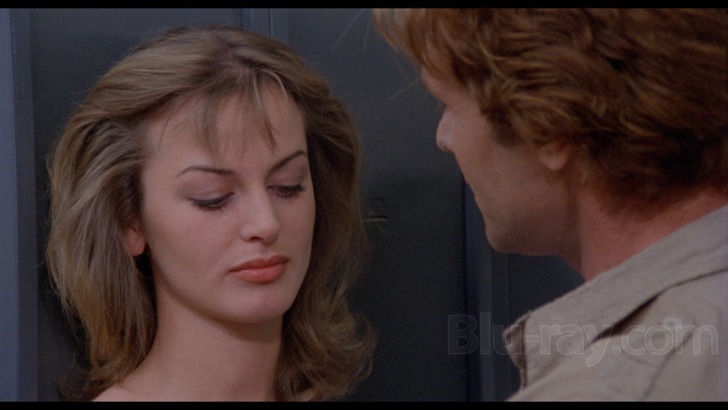
The Pyjama Girl Case is presented on Blu-ray courtesy of Arrow Video with an AVC encoded 1080p transfer in 1.85:1. Arrow's insert booklet contains the following information on the transfer:
The Pyjama Girl Case / La ragazza dal pigiama giallo is presented in its original aspect ratio of 1.85:1 with Italian and English mono audio. Scanning and restoration work was completed at L'Immagine Ritrovata, Bologna. The original 35mm camera negative was scanned in 2K resolution on a pin-registered Arriscan. Thousands of instances of dirt, debris, scratches, picture instability and other instances of film wear were repaired or removed through a combination of digital restoration tools and techniques. The mono Italian and English language tracks were remastered from the optical sound negatives. The audio synch will appear slightly loose against the picture, due to the fact that the dialogue was recorded entirely in post-production, as per the production standards of the period.As Troy Howarth mentions in his commentary, this is an unusually scenic looking film courtesy of the Australian locations and some at times nicely sumptuous cinematography. The scene introducing TImpson is a case in point, with some luscious close-ups of dewdrops on some of the flowers Timpson is tending to that offer excellent detail levels and a really lushly infused palette. There are occasional variations in grain structure, with some fairly coarse looking moments in some of the darker material, but there are no actual compression issues of note. The palette is also slightly variable, tending toward slightly ruddy or pink tones at times that can make flesh tones look a little flushed. Some of the close-ups of the burnt corpse are a little squirm inducing due to rather convincing fine detail. There's really no major damage of any kind to report.
The film was graded on Digital Vision's Nucoda Film Master at R3Store Studios, London.
All materials used in this restoration were accessed from Surf Film.
The Pyjama Girl Case Blu-ray Movie, Audio Quality 
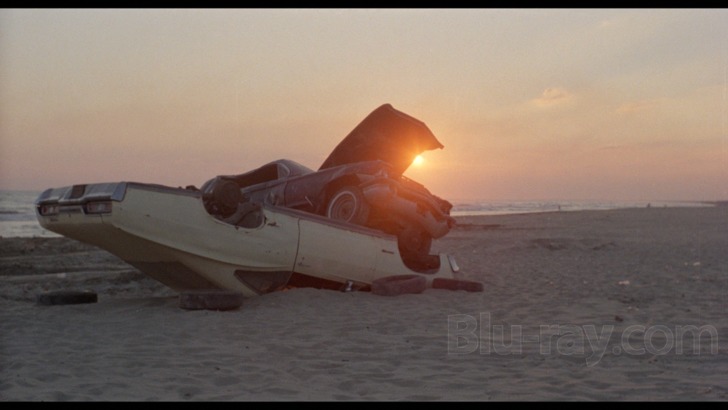
The Pyjama Girl Case features English and Italian tracks in DTS-HD Master Audio Mono, and with regard to overall mix levels, ambience and amplitude, I found little if any difference between them. Interestingly, and something that may not be immediately apparent, is that you get different opening credits sequences depending on which language you choose, and as Michael Mackenzie mentions in the supplement listed below, it's actually fun to look through these different versions within the context of what Mackenzie asserts was the "internationalizing" of giallo for different markets by including names associated with different countries involved in the financing. The film features a kind of odd score by Riz Ortolani, kinda sorta attempting a disco-fied feel, and with several songs sung by Amanda Lear, whom Howarth devotes quite a bit of the first part of his commentary to, and who sounds like a very interesting — person. Fidelity is fine on both tracks, though occasional dialogue in both versions can sound a bit boxy. Speaking of Howarth (and no pun intended, considering this is about dialogue), he seems to discount the idea that this film or any Italian film was actually filmed silently and then completely post-looped. I actually mentioned in our relatively recent Rocco and His Brothers Blu-ray review how surprised I was to hear obvious sound on some outtakes included on that Blu-ray release, which may lend credence to Howarth's assertion.
The Pyjama Girl Case Blu-ray Movie, Special Features and Extras 
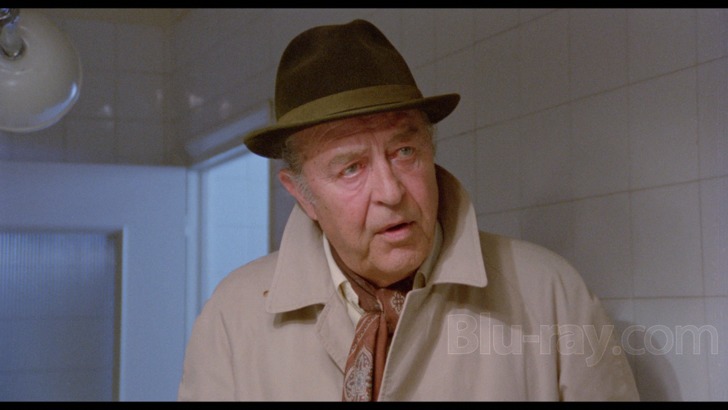
- Audio Commentary features Troy Howarth.
- Small World (1080p; 28:30) features Michael Mackenzie discussing the "globalization" of giallo.
- A Good Bad Guy (1080p; 31:46) is a 2018 interview with actor Howard Ross.
- A Study in Elegance (1080p; 23:17) is an interview with editor Alberto Tagliavia.
- Inside the Yellow Pyjama (1080p; 15:04) is an interview with assistant director Ferruccio Castronuovo.
- The Yellow Rhythm (1080p; 21:24) is advertised as being a "newly edited archival interview" with composer Riz Ortolani.
- Image Gallery (1080p)
- Italian Theatrical Trailer (1080p; 3:55)
The Pyjama Girl Case Blu-ray Movie, Overall Score and Recommendation 
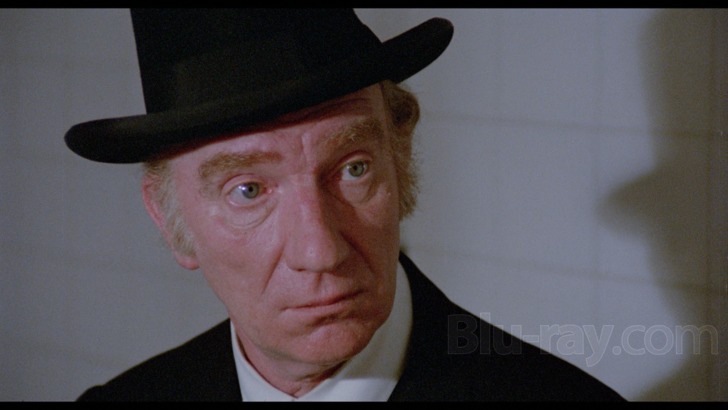
It's kind of funny that a film whose Italian title includes the very word giallo may not actually totally qualify as an entry in that genre. It is nonetheless a rather interesting film, even if you guess its structural conceit fairly early on, as I did. Arrow has provided a release with solid technical merits and their usual fine array of supplements. Recommended.
Similar titles
Similar titles you might also like

The Fifth Cord
Giornata nera per l'ariete
1971

The Possessed
La donna del lago
1965

What Have They Done to Your Daughters?
La polizia chiede aiuto
1974

The Killer Reserved Nine Seats
L'assassino ha riservato nove poltrone
1974

Smile Before Death
1972

The Iguana with the Tongue of Fire
L'iguana dalla lingua di fuoco
1971

The Weapon, the Hour, the Motive
1972

The Suspicious Death of a Minor
Morte sospetta di una minorenne
1975

Strip Nude for Your Killer
Nude per l'assassino
1975

The Cat o' Nine Tails 4K
Il gatto a nove code | Special Edition
1971

A Dragonfly for Each Corpse
Una libélula para cada muerto
1975

Torso 4K
I corpi presentano tracce di violenza carnale | Carnal Violence | Limited Edition
1973

Death Walks on High Heels
Special Edition | La morte cammina con i tacchi alti
1971

Luz
2018

Four Flies on Grey Velvet 4K
4 mosche di velluto grigio
1971

Deep Red 4K
Profondo rosso
1975

Gore in Venice
Giallo in Venice / Giallo a Venezia
1979

Seven Blood Stained Orchids
Sette orchidee macchiate di rosso
1972

Enigma Rosso
Virgin Killer / Red Rings of Fear / Orgie des Todes
1978

Death Carries a Cane
Passi di danza su una lama di rasoio
1973